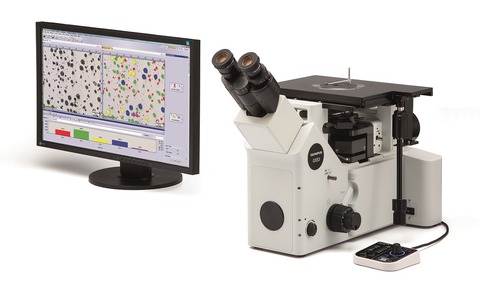
Olympus’ GX53 inverted metallurgical microscope features MIX observation for clear imaging of structures and surface features.
Designed for the observation and inspection of metal components, the microscope features an LED light source for ultra-long life and low power consumption. It incorporates the latest version of OLYMPUS Stream image analysis software (v. 2.3) for improved observation and reporting capabilities.
Inverted metallurgical microscopes observe samples from underneath, enabling the user to inspect thick or heavy samples without adjusting the orientation of the sample surface. This ability makes the GX53 microscope a practical tool for viewing the microstructure of metals used in automotive and other manufactured metal components.
With the incorporation of MIX observation technology — a first for the GX series — the GX53 can obtain surface structure images with exceptional clarity. MIX technology produces unique observation images by combining darkfield with another observation method, such as brightfield, fluorescence or polarisation. MIX observation enables users to view samples that are difficult to see with conventional microscopes - making the invisible, visible.
The circular LED illuminator used for darkfield observation has a directional function where one or more quadrants are illuminated at a given time. This reduces a sample’s halation and is useful for visualising its surface texture. The upgraded version of OLYMPUS Stream image analysis software uses image synthesis to provide clear images with minimal halation, even when viewing highly reflective samples.
When used with OLYMPUS Stream software, the GX53’s coded hardware can save observation settings for easy recall. This improves user productivity and facilitates inspections by making it easy to replicate frequently used observation settings or the settings of other users.
OLYMPUS Stream image analysis software v. 2.3 supports every step of the inspection process, from preparing the microscope to observation, analysis and reporting. The latest version has more solutions for more flexibility - including a new, improved algorithm for the extended focal image (EFI) function that brings the entire field of view into focus.
This software version also closely aligns with the main industry standards (ASTM, ISO) and incorporates improvements to spreadsheet-based reporting functions.






